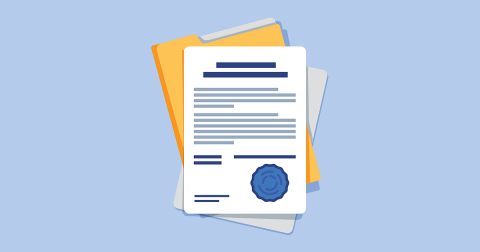Accessibility
The design of products, devices, services, or environments for people with disabilities
Accessibility isn’t just the right thing to do; it’s the law. The guidance, resources, and community you find here will help you deliver accessible digital products and services in the federal government.
Section 508 of the Rehabilitation Act of 1973 and OMB M-24-08

Accessibility: Essential knowledge
-
Section508.gov
This site provides guidance for federal agencies on several topics in IT accessibility, including creating accessible websites and documents, accessibility testing, accessibility training, and accessibility in contracting and procurement.
-
An advanced approach to accessibility
Accessibility is one of the most important values underlying all the work that we do. This is a deeper look into accessibility: what to do, how to do it, and why it matters, especially in government.
-
Accessibility for teams
A quick-start guide for embedding accessibility and inclusive design practices into your team’s workflow.
-
Federal website standards
The federal website standards help agencies provide high-quality, consistent digital experiences for everyone. They cover common visual technical elements and reflect user experience best practices.
-
Accessibility: Usability for every ability
Learn how the U.S. Web Design System uses accessibility in its design language, components, guidance, and layouts.
Accessibility events
Spring 2024 Community Summit
USWDS Monthly Call - November 2023
USWDS Monthly Call - October 2023
Accessibility news
Reduce, remove, remediate: PDFs and government websites
In a recent governmentwide community discussion, we shared tips to remediate the use of PDFs on government websites, focusing on balancing needs, choosing formats, starting fixes, and ensuring documents are accessible for everyone.
FY 24 Governmentwide Section 508 Assessment
The FY 2024 Governmentwide Section 508 Assessment highlights progress and ongoing challenges in federal digital accessibility efforts. This assessment provides key findings on governmentwide accessibility maturity and actionable recommendations. The recommendations include stronger enforcement of 508 standards, increased resourcing, and integrating accessibility into the technology lifecycle to enhance compliance and access for all. — via General Services Administration

TTS made a lasting impact with civic tech in FY24
The Technology Transformation Services (TTS) made significant strides to prioritize and improve federal digital services in FY 2024. From expanding Login.gov to over 72 million users, launching tools like Notify.gov, or redesigning Vote.gov in 19 languages, explore how TTS continues to set the standard for impactful civic tech innovation. — via General Services Administration

Ensuring Effective and Timely Usability Research
Usability reflects how easily a user can accomplish their goals while using a product or service. The Office of Information and Regulatory Affairs (OIRA) has issued new guidance to streamline usability testing for federal forms, websites, and services, helping agencies conduct usability tests in a more quick and efficient manner that is consistent with the Paperwork Reduction Act (PRA). By enabling faster, more effective testing, OIRA aims to enhance public interactions with the government and ensure equitable access to federal resources. — via The White House

Publishing federal sales data: how we used design studios and user testing to develop a user-centered dataset
The Open Data, Design, and Development team at the Office of Natural Resource and Revenue (ONRR) successfully added federal sales data to the Natural Resources Revenue Data (NRRD) platform using design studios and user testing to create a user-centered dataset. By involving subject matter experts and refining prototypes through feedback, the team delivered the project ahead of schedule while meeting user needs. Future plans included additional usability testing and expanding stakeholder engagement. — via Office of Natural Resources Revenue

Resources on Accessibility
-
Requirements for delivering a digital-first public experience
Learn how to implement 21st Century IDEA to design and deliver better websites and digital services.
-
An introduction to accessibility
An overview of how to design and deliver accessible digital products and services in the federal government
-
An advanced approach to accessibility
A deeper look at accessibility: what to do, how to do it, and why it matters.
-
Bilingual Glossaries, Dictionaries, and Style Guides
Multilingual resources to standardize the use of various languages across government.
-
Requirements for strengthening the federal government’s commitment to digital accessibility
Learn how to implement Section 508, and strengthen and maintain your agency’s commitment to digital accessibility.
-
Lessons from the 2021 Federal Plain Language Report Card
This event recap highlights best practices, a short case study video, and examples of federal web content that received both high and low scores in the 2021 Plain Language Report Card.
-
How to Test Websites for Accessibility
Use both manual and automated testing methods to create accessible websites.
-
FY 23 Governmentwide Section 508 Assessment
Report: Assessment of compliance with Section 508 requirements.
-
M-24-08 Strengthening Digital Accessibility and the Management of Section 508 of the Rehabilitation Act
Provides requirements and recommendations to support agency integration of digital accessibility into their missions and operations, helping government technology and information resources better serve a diverse public and federal workforce.
-
PlainLanguage.gov
A resource to help federal employees write in plain language and comply with the Plain Writing Act of 2010.
-
Federal Acquisition Regulation (FAR)
The primary regulation for use by all executive agencies in their acquisition of supplies and services with appropriated funds. The FAR also contains standard solicitation provisions and contract clauses and the various agency FAR supplements.
-
Find Your Section 508 Program Manager
Agency Section 508 Program Managers (PMs) are your first point of contact for questions about IT accessibility.
-
Tabular Comparison of the Previous FAR Text Against the 2021 Update
These FAR Council updates are effective as of September 10, 2021.
-
Integrating Accessibility into Agency Diversity, Equity, Inclusion, and Accessibility (DEIA) Implementation Plans
Guidance on implementing Executive Order (14035) on Diversity, Equity, Inclusion, and Accessibility in the Federal Workforce; specifically, elements of the Accessibility Roadmap outlined in the Government-wide DEIA Strategic Plan.
-
Accessibility Requirements Tool (ART)
ART is a multifaceted tool that offers interactive, step-by-step guidance on how to determine applicable accessibility requirements.
-
Federal Acquisition Regulation Subpart 39.2 - Information and Communication Technology
This subpart implements section 508 of the Rehabilitation Act of 1973 (29 U.S.C. 794 d), and the Architectural and Transportation Barriers Compliance Board’s (U.S. Access Board) information and communication technology (ICT) accessibility standards at 36 CFR 1194.1.
-
Best Practices for Writing for the Accessible Web
Tips for making online information accessible for those with auditory and visual needs.
-
Executive Guide to Federal IT Accessibility
Guidance to help federal agencies improve accessibility to increase compliance with federal policy.
-
U.S. Web Design System
A design system for the federal government that makes it easier to build accessible, mobile-friendly government websites for the American public.
-
An Introduction to USWDS 3.0
A design system for the federal government that makes it easier to build accessible, mobile-friendly government websites for the American public.
-
Revised 508 Standards Roadmap
Follow the Revised 508 Standards to ensure your information and communication technology (ICT) is accessible and usable by individuals with disabilities.
-
Quick Reference to Web Content Accessibility Guidelines 2.0 requirements
This quick reference guide will help you meet Web Content Accessibility Guidelines (WCAG) 2.0. It is a customizable quick reference to the requirements, success criteria and techniques.
-
U.S. Access Board Section 508 Standards
The Section 508 Standard for Electronic and Information Technology requires that when a federal agency shares information digitally, individuals with disabilities seeking information or services from a federal agency, must have access to and be able to use the information and data, unless an undue burden would be imposed on the agency.
-
Improving the Accessibility of Social Media in Government
Government agencies are increasingly using social media to engage with citizens, share information and deliver services more quickly and effectively than ever before. But as social content, data and platforms become more diverse, agencies have a responsibility to ensure these digital services are accessible to all citizens, including people with disabilities.
-
18F Accessibility Guide
A resource for developing accessible products.
-
Accessibility for Teams
A guide to making products more accessible for everyone.
-
Web Accessibility Guidelines (WCAG)
The Web Content Accessibility Guidelines (WCAG) documents explain how to make web content more accessible to people with disabilities. Web “content” generally refers to the information in a web page or web application, including: natural information such as text, images, and sounds code or markup that defines structure, presentation, etc. View the Web Accessibility Guidelines
More News and Events on Accessibility
109 posts
Reduce, remove, remediate: PDFs and government websites
In a recent governmentwide community discussion, we shared tips to remediate the use of PDFs on government websites, focusing on balancing needs, choosing formats, starting fixes, and ensuring documents are accessible for everyone.
FY 24 Governmentwide Section 508 Assessment
The FY 2024 Governmentwide Section 508 Assessment highlights progress and ongoing challenges in federal digital accessibility efforts. This assessment provides key findings on governmentwide accessibility maturity and actionable recommendations. The recommendations include stronger enforcement of 508 standards, increased resourcing, and integrating accessibility into the technology lifecycle to enhance compliance and access for all. — via General Services Administration

Ensuring Effective and Timely Usability Research
Usability reflects how easily a user can accomplish their goals while using a product or service. The Office of Information and Regulatory Affairs (OIRA) has issued new guidance to streamline usability testing for federal forms, websites, and services, helping agencies conduct usability tests in a more quick and efficient manner that is consistent with the Paperwork Reduction Act (PRA). By enabling faster, more effective testing, OIRA aims to enhance public interactions with the government and ensure equitable access to federal resources. — via The White House

TTS made a lasting impact with civic tech in FY24
The Technology Transformation Services (TTS) made significant strides to prioritize and improve federal digital services in FY 2024. From expanding Login.gov to over 72 million users, launching tools like Notify.gov, or redesigning Vote.gov in 19 languages, explore how TTS continues to set the standard for impactful civic tech innovation. — via General Services Administration

Publishing federal sales data: how we used design studios and user testing to develop a user-centered dataset
The Open Data, Design, and Development team at the Office of Natural Resource and Revenue (ONRR) successfully added federal sales data to the Natural Resources Revenue Data (NRRD) platform using design studios and user testing to create a user-centered dataset. By involving subject matter experts and refining prototypes through feedback, the team delivered the project ahead of schedule while meeting user needs. Future plans included additional usability testing and expanding stakeholder engagement. — via Office of Natural Resources Revenue

You’ve launched, now what? Planning for the future of your content
Creating quality digital content is not a one-time endeavor. Explore these approaches to managing and improving excellent digital content over time.
Broadening Public Participation and Community Engagement With the Federal Government
Government works best when it incorporates transparent engagement and feedback from the public. The White House Office of Management and Budget (OMB) is enhancing public participation in federal decision-making through draft guidance and a proposed toolkit. These resources aim to standardize best practices, improve accessibility, and ensure underserved communities have meaningful opportunities to contribute. By prioritizing transparency and collaboration, OMB seeks to create politics that reflect the voices and needs of the public. — via Performance.gov

Building a tool to make mail in voter registration more accessible
Vote.gov partnered with the U.S. Election Assistance Commission to create an accessible tool for filling out the National Mail Voter Registration Form. It simplifies the process with features like screen reader compatibility, mobile-friendly design, and state-specific instructions. Available in English and Spanish, the tool reduces errors and helps state election offices process forms more efficiently, making voter registration easier for everyone. — via USA.gov

Simplifying manual accessibility testing: How plain language instructions drive compliance
Testing for accessibility ensures that digital services are usable for everyone. Explore how the Office of Natural Resources and Revenue (ONRR) streamlined their manual testing process with plain language instructions to create a more uniform testing methodology across their agency. By balancing detail with usability and continually updating resources, ONRR empowers both their small team and subject matter experts to meet Section 508 compliance. — via Office of Natural Resources Revenue

Uncovering impactful solutions through user research
Get an overview of what user research and user testing are in a federal context. Learn what policies apply and what resources are available.
Delivering a digital-first public experience: One agency’s plan
Learn how the U.S. General Services Administration is tackling the 100+ requirements of OMB memo M-23-22, Delivering a Digital-First Public Experience.
How our developers and accessibility specialists work together
Planning for accessibility is critical to creating more inclusive digital experiences. Discover how developers and accessibility specialists from USA.gov collaborate early in the development process to ensure that their government websites are accessible for everyone. By following established accessibility standards, such as the Web Content Accessibility Guidelines (WCAG) and Section 508 of the Rehabilitation Act, USA.gov proactively reduces the need for later fixes. — via USA.gov

How multicultural research guides the USA.gov benefit finder
Discover how USA.gov tailors its benefit finder experience for both English and Spanish-speaking users through culturally nuanced content. Through dual-track language research, a bilingual support team, and A/B testing, USA.gov ensures that more users receive relevant, empathetic, and user-friendly content. The USA.gov team also identified and addressed recruitment challenges to interatively improve its ongoing research processes. — via USA.gov

A journey of improvement: Creating a self-assessment for digital experience
Memo M-23-22 from the Office of Management and Budget provides guidance to federal agencies on delivering a digital-first public experience. To quantify its compliance with the memo, the Open Data, Design, and Development team at the Department of the Interior created and conducted a self-assessment of its digital products. The team used a scoring spreadsheet to measure compliance across categories like accessibility, design consistency, and mobile responsiveness. The results helped the team develop a plan to prioritize improvements and engage with leadership for support on other initiatives. — via Office of Natural Resources Revenue

Designing for people with disabilities
The User Experience (UX) team at USA.gov’s Public Experience Portfolio recently conducted a study to analyze the experiences of individuals who access USA.gov through assistive technology. The team partnered with a local organization to gather insights from a diverse group of participants, many of whom are blind or deaf. The study revealed various habits and challenges faced by these users, such as a preference for mobile sites, difficulty with website carousels, and a reliance on clear headings and action-oriented descriptions. These findings can guide improvements in accessibility, such as clever link labeling and better navigation aids for assistive technology users. — via USA.gov

Evaluating your agency’s accessibility just got a whole lot easier with GSA’s OpenACR Editor
To help agencies evaluate the accessibility of their digital products, GSA is making it easier to create Accessibility Conformance Reports through its new OpenACR Editor.
Bridge the gap between policy and implementation: Impactful solutions and strategies for success from Digital.gov’s spring 2024 summit
The summit highlighted digital transformation, emphasizing the significance of recent OMB memos for improving accessibility and customer experience.
Digital front door: Expanding access to VA
More Veterans are turning to the U.S. Department of Veterans Affairs (VA) for healthcare and benefits, accessing these services online through tools like the VA Health and Benefits mobile app and VA.gov. With over 2.28 million app downloads and 17.8 million monthly visitors on VA.gov, these digital tools provide faster, easier, and more inclusive access to VA services. Learn more about how these technologies are often Veterans’ first interaction with VA by watching their latest video, Digital Front Door: Expanding Access to VA. — via U.S. Department of Veterans Affairs

Back to basics in the age of AI
The federal government is actively discussing the transformative potential of artificial intelligence (AI). It has the potential to transform our digital service delivery, automate tasks, and enhance data analysis. However, AI also presents challenges and risks such as bias and ethical concerns. The team at 18F provides a quick overview of AI, its place in government today, and the techniques and frameworks they are currently using to navigate this complex new landscape. — via 18F

Case study: Removing barriers to applying for a presidential pardon
At the Department of Justice, Access DOJ and the Office of the Pardon Attorney (PARDON) partnered to simplify and streamline the presidential pardon application process. By conducting usability testing and gathering feedback, they identified key issues with the existing application, such as its complexity and length. See how redesigning the forms to be more accessible and understandable led to a more efficient process for both applicants and staff. — via Department of Justice









